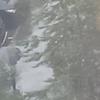
Age Related Hearing Loss and Regrowth of Stereocilia
#1
Posted 05 May 2022 - 05:20 PM
#2
Posted 06 May 2022 - 01:39 AM
#3
Posted 06 May 2022 - 12:27 PM
I quite like this online test
https://www.audioche...cycheckhigh.php
I have until recently been able to hear 13kHz in the morning and 14kHz in the evening. However, more recently I have intermittently heard the 15kHz sound. I am 62, I do play the piano and was a drummer in a heavy metal/punk band in the 1970s. I did, however, use ear plugs when playing the drums and avoided stupidly loud sounds.
#4
Posted 06 May 2022 - 04:15 PM
Edited by mbdrinker, 06 May 2022 - 04:26 PM.
#5
Posted 06 May 2022 - 05:29 PM
I perform as a pianist (amplified keyboards in a jazz band). I think my hearing is at worst static, but potentially improving.
#6
Posted 06 May 2022 - 06:19 PM
#8
Posted 17 May 2022 - 01:33 AM
With age tissues undergo deformation which changes ear chambers and cavities shape which can luckily potentially boost hi frequencies like is made in microphone designing
#9
Posted 05 July 2023 - 03:20 AM
Nate - EGCG liquid mixed with DMSO and put into the ear canal might make it past the eardrum. I don't know if it would make it to the cochlea or not. Also it seems the liquids are only 50% EGCG so there would be some other crap in there. I would be afraid to try it.
#10
Posted 05 July 2023 - 03:49 AM
The efficacy of N-acetylcysteine to protect the human cochlea from subclinical hearing loss caused by impulse noise: a controlled trial
"In military outdoor shooting training, with safety measures enforced, the risk of a permanent, noise-induced hearing loss is very small. But urban warfare training performed indoors, with reflections from walls, might increase the risk. A question is whether antioxidants can reduce the negative effects of noise on human hearing as it does on research animals. Hearing tests were performed on a control group of 23 military officers before and after a shooting session in a bunker-like room. The experiments were repeated on another group of 11 officers with peroral adminstration of N-acetyl-cysteine (NAC), directly after the shooting. The measurements performed were tone thresholds; transient-evoked otoacoustic emissions, with and without contralateral noise; and psycho-acoustical modulation transfer function (PMTF), thresholds for brief tones in modulated noise. Effects from shooting on hearing thresholds were small, but threshold behavior supports use of NAC treatment. On the PMTF, shooting without NAC gave strong effects. Those effects were like those from continuous noise, which means that strict safety measures should be enforced. The most striking finding was that the non-linearity of the cochlea, that was strongly reduced in the group without NAC, as manifested by the PMTF-results, was practically unchanged in the NAC-group throughout the study. NAC treatment directly after shooting in a bunkerlike room seems to give some protection of the cochlea."
Dosing study on the effectiveness of salicylate/N-acetylcysteine for prevention of noise-induced hearing loss
"Abstract
The efficacy of three different doses of sodium salicylate (SAL) in combination with one dose of N-acetylcysteine (NAC) to prevent noise-induced hearing loss was studied in chinchillas. After obtaining baseline-hearing thresholds, the chinchillas were randomly assigned to one of four treatment groups: three sets were injected intraperitoneally with 325 mg/kg NAC combined with 25, 50, or 75 mg/kg SAL, and a separate control group was injected with an equal volume of saline. Animals were injected twice daily for 2 days prior to and 1 hour before the noise exposure (6 hours to a 105-dB Standard Pressure Level octave band noise centered at 4 kHz). Immediate post-noise hearing thresholds were obtained followed by post-noise treatments at 1 hour then twice-daily for 2 days. Hearing tests continued at 1, 2, and 3 weeks post-noise, and immediately after the last hearing test, animals' cochleae were stained for hair cell counts. All the groups showed hearing improvement until week 2. However, at week 3, saline treated animals demonstrated a 17-33 dB SPL permanent threshold shift (PTS) across the test frequencies. Hearing loss was lowest in the 50 SAL/325 NAC mg/kg group (all frequencies, P < 0.001), and although PTS was reduced in the 25 and 75 mg/kg SAL dosage groups compared to the saline group, only the 75 mg/kg SAL group was significantly different at all but 2 kHz frequency. Coupled with the hearing loss, outer hair cell (OHC) loss was maximal in the 4-8 kHz cochlear region of saline treated animals. However, there was a substantial reduction in the mean OHC loss of the NAC plus 50 or 75 mg/kg (but not the 25 mg/kg) SAL groups. These findings suggest that SAL in combination with NAC is effective in reducing noise damage to the cochlea, but SAL has a relatively narrow therapeutic dosing window."
Dose and time-dependent protection of the antioxidant N-L-acetylcysteine against impulse noise trauma
"Noise-induced hearing loss is one of the most common causes of hearing disability, and at present there is no effective biological protection or cure. Firearms and some industrial equipment can generate very high levels of impulse noise, which is known to cause sensorineural hearing loss. It has been shown that antioxidants such as N-L-acetylcysteine (NAC) can protect the inner ear from oxidative damage. The present study investigates whether NAC (i.p.) can protect the cochlea from impulse noise trauma. Rats were exposed to 50 noise pulses at 160 dB SPL peak value. Electrophysiological hearing thresholds were assessed with auditory brainstem response (ABR) up to 4 weeks after noise exposure. Animals exposed to impulse noise, without treatment of NAC, had larger threshold shifts in the frequency range 4-40 kHz than animals injected with NAC. Hair cell loss was significantly reduced using a schedule of three NAC injections in the rats. These results suggest that NAC can partially protect the cochlea against impulse noise trauma."
#11
Posted 05 July 2023 - 01:48 PM
This is interesting but Nate was originally asking about regenerating the hair cells in the cochlea, not preserving the existing ones. The fact that NAC and aspirin can make it to the cochlea orally or by injection is promising. Maybe with a larger dose of EGCG some might get to the cochlea.
Also interesting that aspirin+NAC was effective in preserving the cells. I saw an ENT recently and one of the warnings she gave me said aspirin was associated with hearing loss. Maybe its the dose. 50mg/kg would be a huge dose for humans.
#12
Posted 25 January 2025 - 01:45 PM
In the old book Life Extension by Durk Pearson he mentioned the expensive drug Hydergene sp? .
This drug was taken at .5mg a day in a hope it would slow alzhimers. But when some people used
it off label at 10mg a day it often restored high frequency hearing loss. But I read that way back in
about 1972 so I may not be remembering it correctly.
#13
Posted 27 January 2025 - 09:57 PM
That's interesting. It would be nice enjoying music at old age.
#14
Posted 04 February 2025 - 04:13 PM
Nowadays there are a lot of factors damaging hearing. Hildren's toys have damaging sound level and many medications exhibit toxicity for hearing. Deaf population is beneficial to those at power as it's easier to rule it than those who can percieve all frequencies and ideas embodied by them.
#15
Posted 04 February 2025 - 06:11 PM
Occasionally a manganese deficiency may cause hearing loss. Notice I said manganese not to be
confused with magnesium. And you have to be careful with manganese as it can be toxic giving
rise to a condition almost like Alzheimer's . About 30 years ago I found I could hear up to about
17,000 hz in my right ear but my hearing stopped at about 5,000 hz in my left ear. But after taking
about 5 mg a day of manganese I could soon hear up to about 13,000 hz in my left ear. Oh I tried it
at 10 mg a day but that didn't help any more than the 5 mg did. And this manganese didn't extend
my hearing any more in my good ear. But as I said earlier excess manganese can be rather toxic
giving some brain damage resembling Alzheimer's.
#16
Posted 05 February 2025 - 03:08 AM
How long did you take manganese?
#17
Posted 07 February 2025 - 09:01 PM
Also how long have you taken it? And how long has the ability to hear 13000 remained? Was the curing result permanent?
Edited by mbdrinker, 07 February 2025 - 09:02 PM.
#18
Posted 17 April 2025 - 02:04 AM
Also tagged with one or more of these keywords: hearing
Science & Health →
Supplements →
Any Drugs to Prevent Future Hearing Loss?Started by nickthird , 16 Jul 2019 |
|

|
||
Science & Health →
Brain Health →
EGCG and curcumin for cochlear hair cell regenerationStarted by hoax , 20 Oct 2015 |
|

|
||
Science & Health →
Lifestyle →
How high can you hear?Started by InquilineKea , 16 Aug 2013 |
|

|
||
Science & Health →
Brain Health →
Restoring Hearing w/ Nootropics/Nutrients?Started by topsykretts , 25 Feb 2013 |
|

|
||
Science & Health →
Brain Health →
How does marijuana improve hearing?Started by Hyuckaderp , 14 Jan 2013 |
|

|
1 user(s) are reading this topic
0 members, 1 guests, 0 anonymous users














































